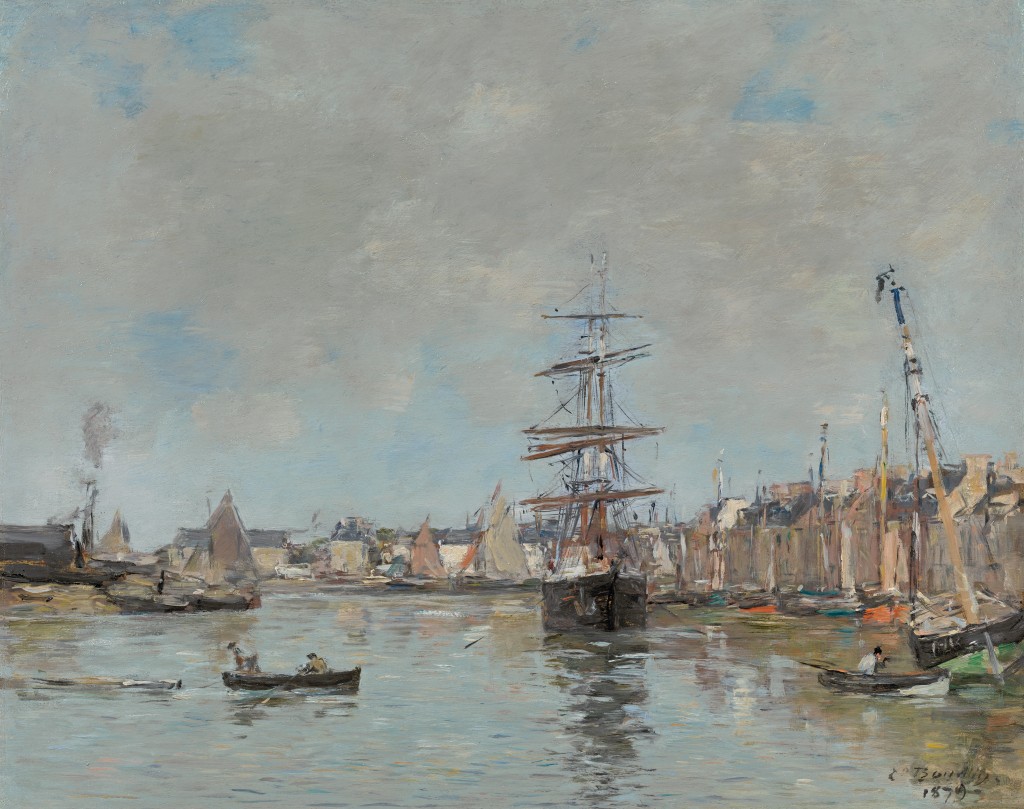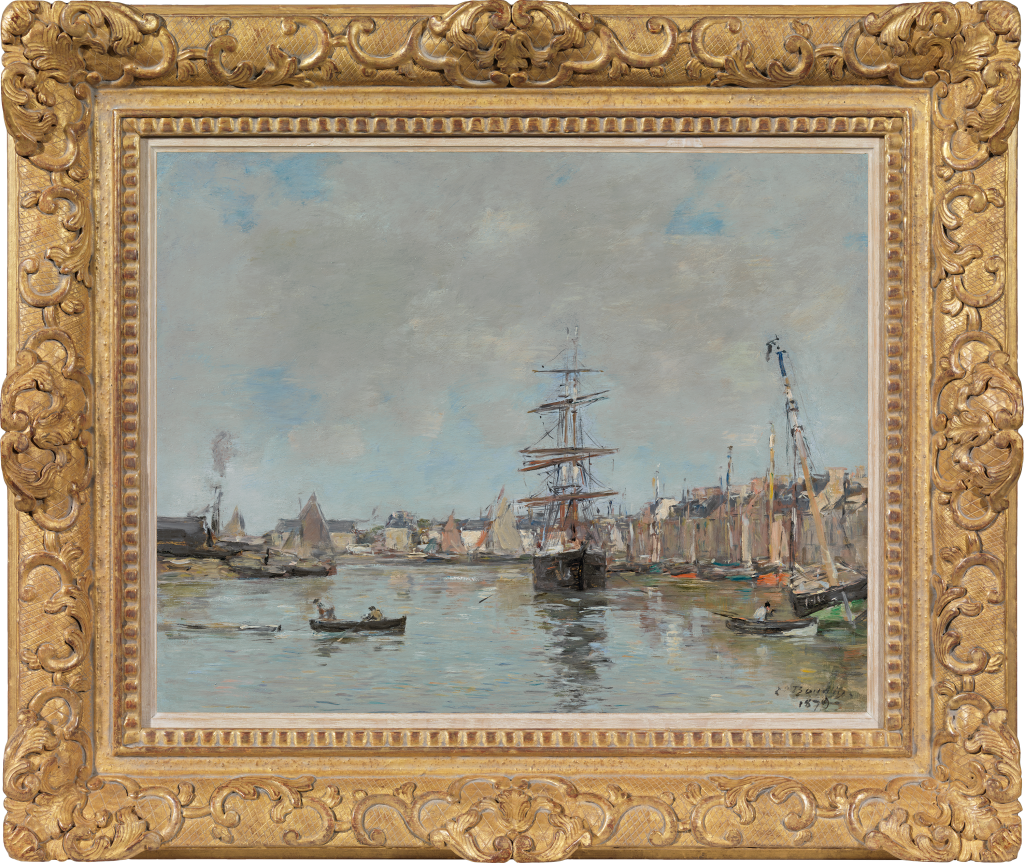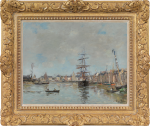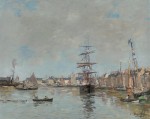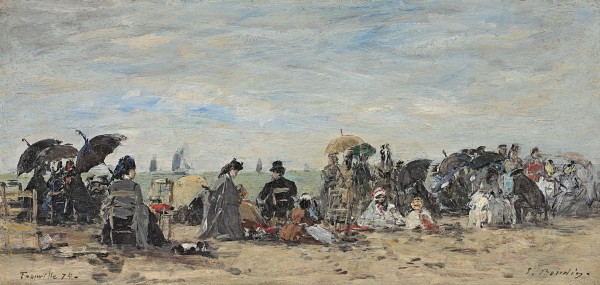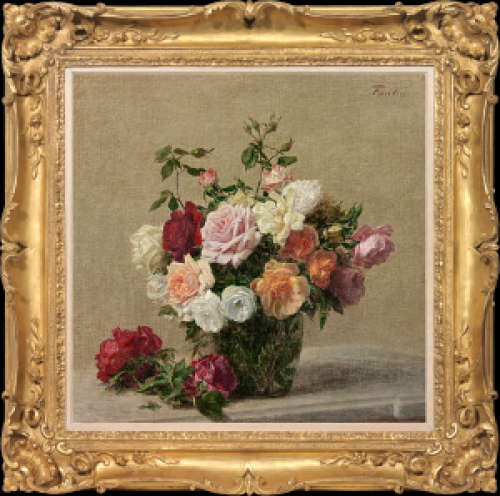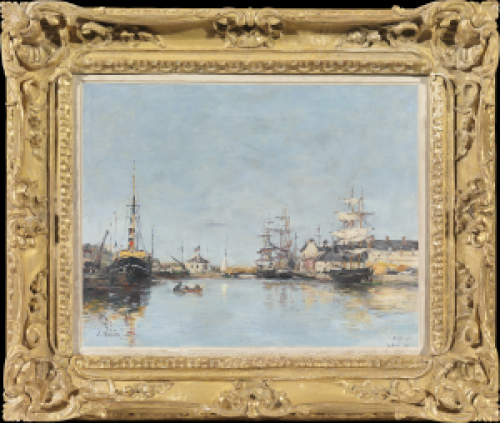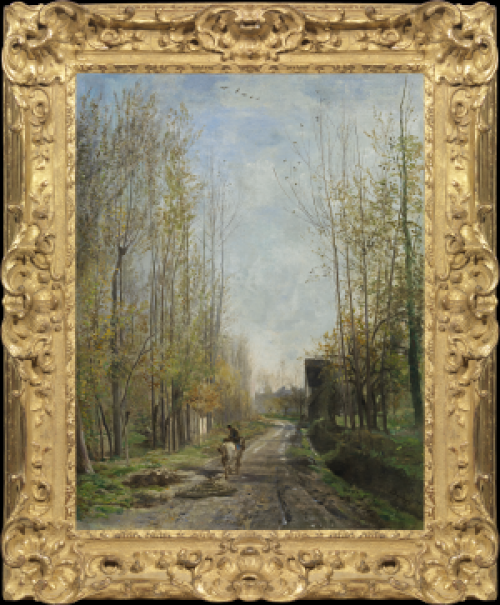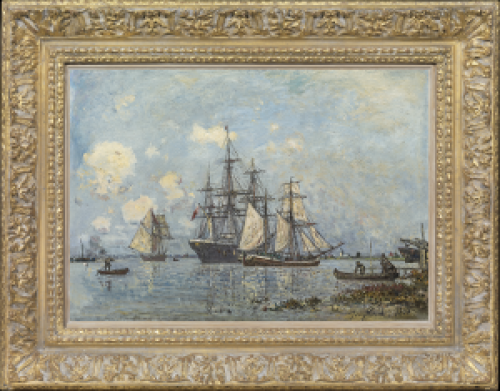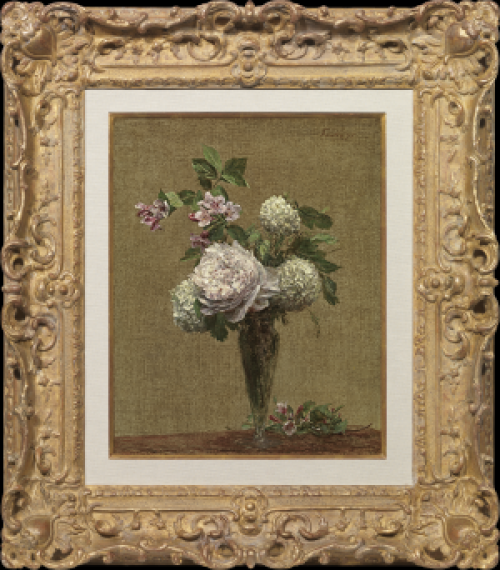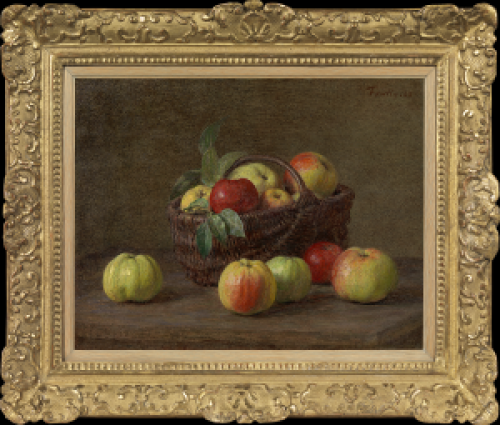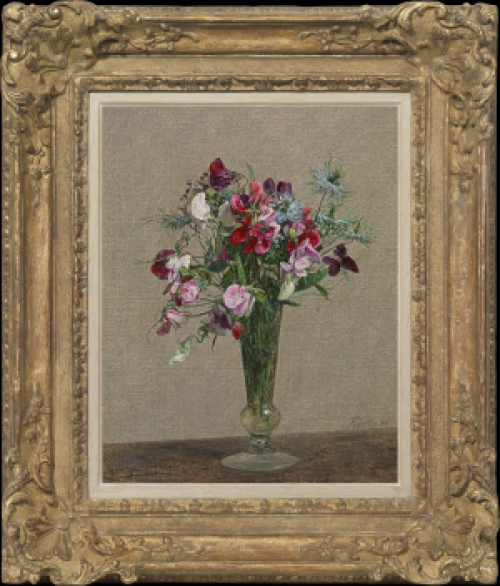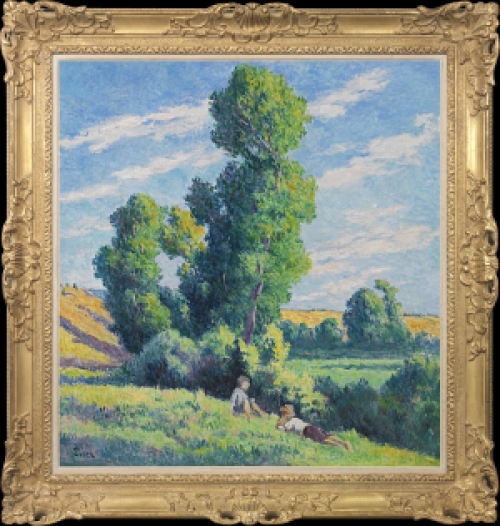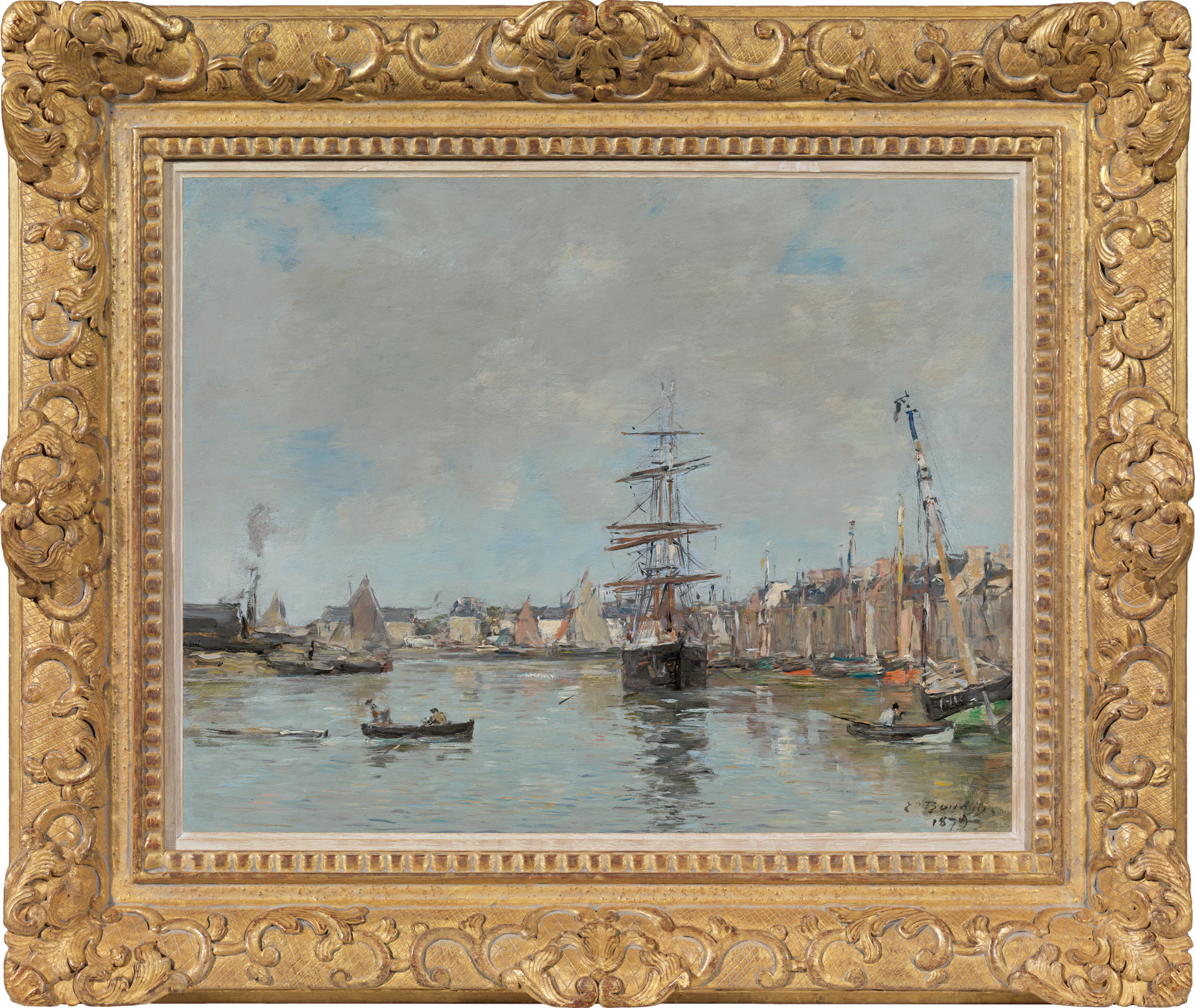EUGENE BOUDIN
Honfleur 1824 - 1898 Deauville
Ref: BT 281
Le port de Trouville
Signed and dated lower right: E Boudin / 1879
inscribed with the title on the reverse
Oil on panel: 12 5/8 x 16 ¼ in / 32.1 x 41.3 cm
Frame size: 20 x 23 in / 50.8 x 58.4 cm
Provenance:
Private collection, France
To be included in the new edition of the Catalogue Raisonné de l’oeuvre peint of Eugène Boudin being prepared by Manuel Schmit, archive ref. no.B-T.4483
Eugène Boudin is best known for panoramic beach scenes painted in the Normandy resorts of Trouville and Deauville, a motif which he explored with great subtlety from the early 1860s to the mid-1890s. Boudin was born in Honfleur, the son of a sailor, so the sea was in his blood. After studying in Paris from 1847 to 1854, he returned each summer to his beloved Normandy coast, sketching and painting from nature. Winters were spent in his Paris studio preparing works for exhibition.
As well as painting fashionable holidaymakers on Trouville’s beach lined by grand hotels and the Casino, Boudin painted many views of the port, the heart of the city which derived much of its prosperity from fishing. The port had been developed by the Duc de Morny (1811-1865), the illegitimate half-brother of Emperor Napoleon III, who built the large floating dock known as the Bassin Morny.
The present view is taken from the Deauville side of the bridge over the Touques river, showing the long quayside lined with fishing- and rowing boats. By the 1870s there were seventy-five large boats of twenty-five to thirty tons and many smaller vessels of three to eight tons, employing about 800 fishermen[1]. The houses on the quayside were older than the flamboyant neo-medieval or neo-Renaissance fantasies lining the beach, which are out of sight beyond the Pointe de la Cahotte. Boudin subtly suggests light playing on the tall, eighteenth and nineteenth century houses with their pastel façades and slate roofs. In the distance to the left is the long warehouse on the Pointe, a familiar feature in many of Boudin’s paintings, and the celebrated Hôtel Bellevue, owned by Monsieur Schlésinger. It was there that the teenaged Flaubert encountered the enchanting Elisa Foucault, Mme Schlésinger, who made ‘certains couchers de soleil à Trouville, au bord de la mer’ among ‘les plus grands évenéments’ of his life, and inspired L’Education Sentimentale (1869)[2].
In the left middleground is the boatyard which had been moved in 1867 from the Pointe de la Cahotte to the Deauville bank of the Touques. The smoking chimney and black, grey and beige of the boatyard area balance the black hull of the large fishing boat at the centre of the composition and the rowing boat in the foreground. The quayside, by contrast, is enlivened with touches of strong colour in the red and green hulls of the boats and the warm pink stucco of the sunlit houses. Boudin paints with tremendous brio, conveying shapes with flickering brushwork. A generation older than his Impressionist friends, he leads them in new ways of looking at the world.
An 1873 painting from a similar viewpoint to the present work, but taken closer to the boatyard, is in the National Gallery of Scotland, Edinburgh[3].
EUGENE BOUDIN
Honfleur 1824 - 1898 Deauville
Eugène Boudin was one of the most important precursors of the Impressionists, with his emphasis on working directly from nature and free, naturalistic brushwork. His ‘Crinolines’, depicting fashionable holidaymakers enjoying the beaches of northern France, ushered in a new genre, but he was also renowned for coastal and harbour scenes.
Born in Honfleur, Boudin was the son of a harbour pilot and bred to the sea, working as a cabin boy for his father in his boat Le Polichinelle. After a brief period of schooling, in 1835, he worked with a stationer and framer who displayed the work of artists, then set up his own stationery and framing business in 1844. Boudin’s clients included Thomas Couture, Eugène Isabey, Jean-François Millet and Constant Troyon, all of whom had an influence on his efforts to draw and paint. In 1847 Boudin went to Paris to copy Old Masters in the Louvre; he was particularly impressed by the seventeenth century Dutch school and by the Barbizon painters. In 1851 he was awarded a three-year painting scholarship by the city of Le Havre. He drew his subjects from the Normandy and Brittany coasts. In 1858 he met the young Claude Monet, who had grown up in Le Havre, and stressed to him the importance of making oil paintings directly from nature to capture the constantly changing beauties of the landscape. Boudin and Monet went on painting expeditions together, especially at the Saint-Siméon farm near Le Havre.
Boudin made his debut at the Salon in 1859, where his work was admired by Charles Baudelaire. He befriended Courbet, Daubigny and Corot, who heralded him as ‘the king of the skies’. Paris-based in the winter, Boudin spent his summers on painting tours around the coast of Le Havre, Honfleur and Trouville, inspired by the elegant society that flocked to the burgeoning seaside towns and by the busy maritime traffic. At Trouville in 1862 he met Johan Barthold Jongkind and, influenced by his boldness of technique, adopted freer brushwork and a brighter palette. The following year he married a Breton woman, Marie-Anne Guédès.
Boudin made several journeys to Belgium and The Netherlands, initially to shelter from the Franco-Prussian War (1870-71). From 1892 to 1895 he visited Venice, making subtle, atmospheric and highly individual views. He also painted in the south of France at Antibes, Villefranche and Beaulieu, where he stayed in the 1890s for the health benefits of the mild winter climate. Boudin exhibited at the Salon from 1863 to 1897 and participated in the First Impressionist Exhibition in 1874.
From the 1870s Boudin enjoyed increasing financial security. In the 1880s he was taken up by the influential art dealer Paul Durand-Ruel, the champion of the Impressionists. Durand-Ruel organised exhibitions of his pictures in 1883, 1889, 1890 and 1891. In 1892 Boudin was awarded the Légion d’Honneur. He died in Deauville in 1898.
Works by Eugène Boudin can be found in the many museums worldwide including The National Gallery of Art, Washington DC; The Metropolitan Museum of Art, New York; The National Gallery, London; Musée d’Orsay, Paris; Musée du Louvre, Paris and The Hermitage, St Petersburg.
[1] Vivien Hamilton, Boudin at Trouville, Glasgow 1992, p.104.
[2] Les Amis de Flaubert, Bulletin no.6, 1955, p.47.
[3] Trouville harbour, oil on panel 12 x 22 ½ in / 30.7 x 57.6 cm, inv. no. NG 2371.


